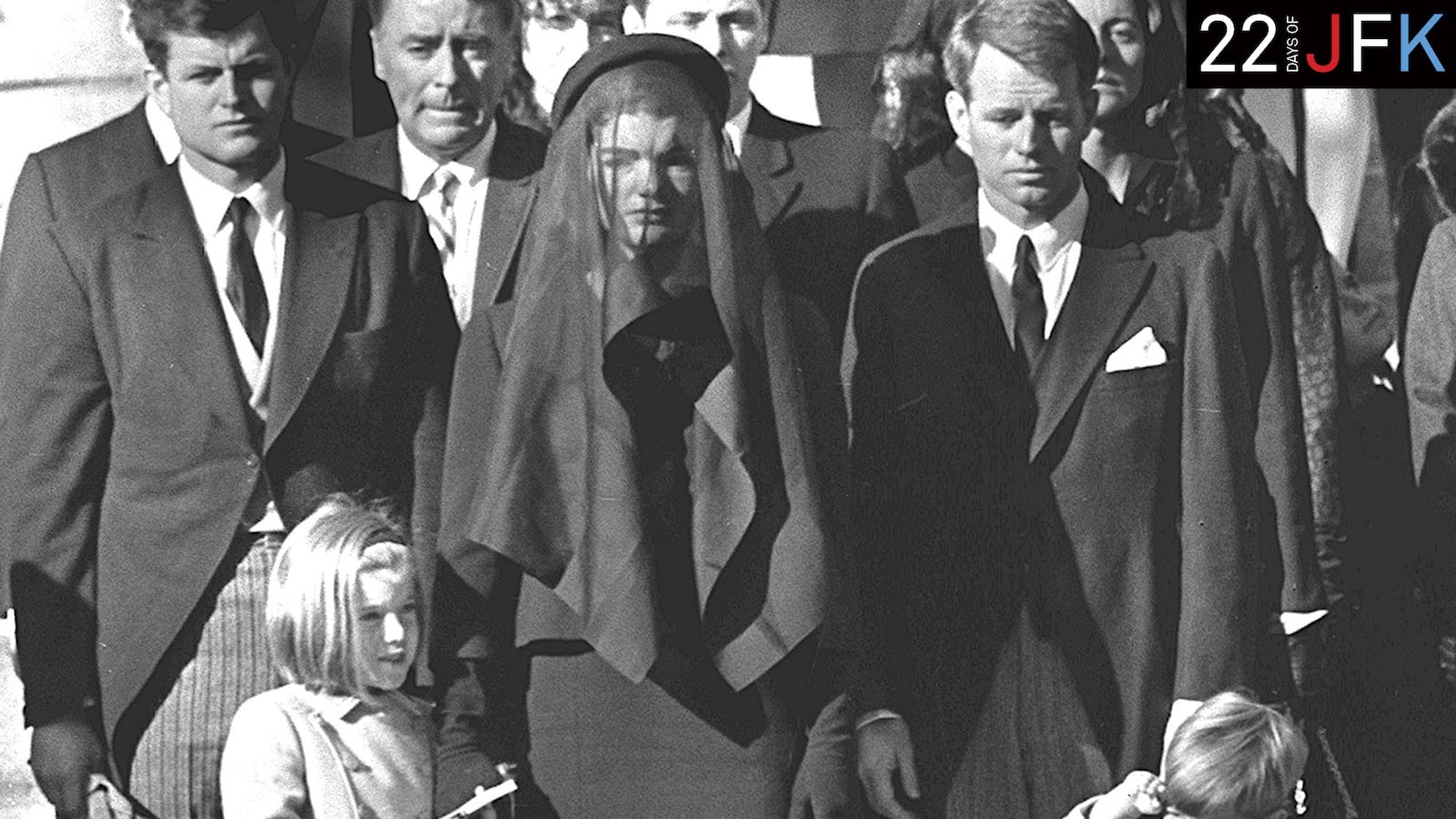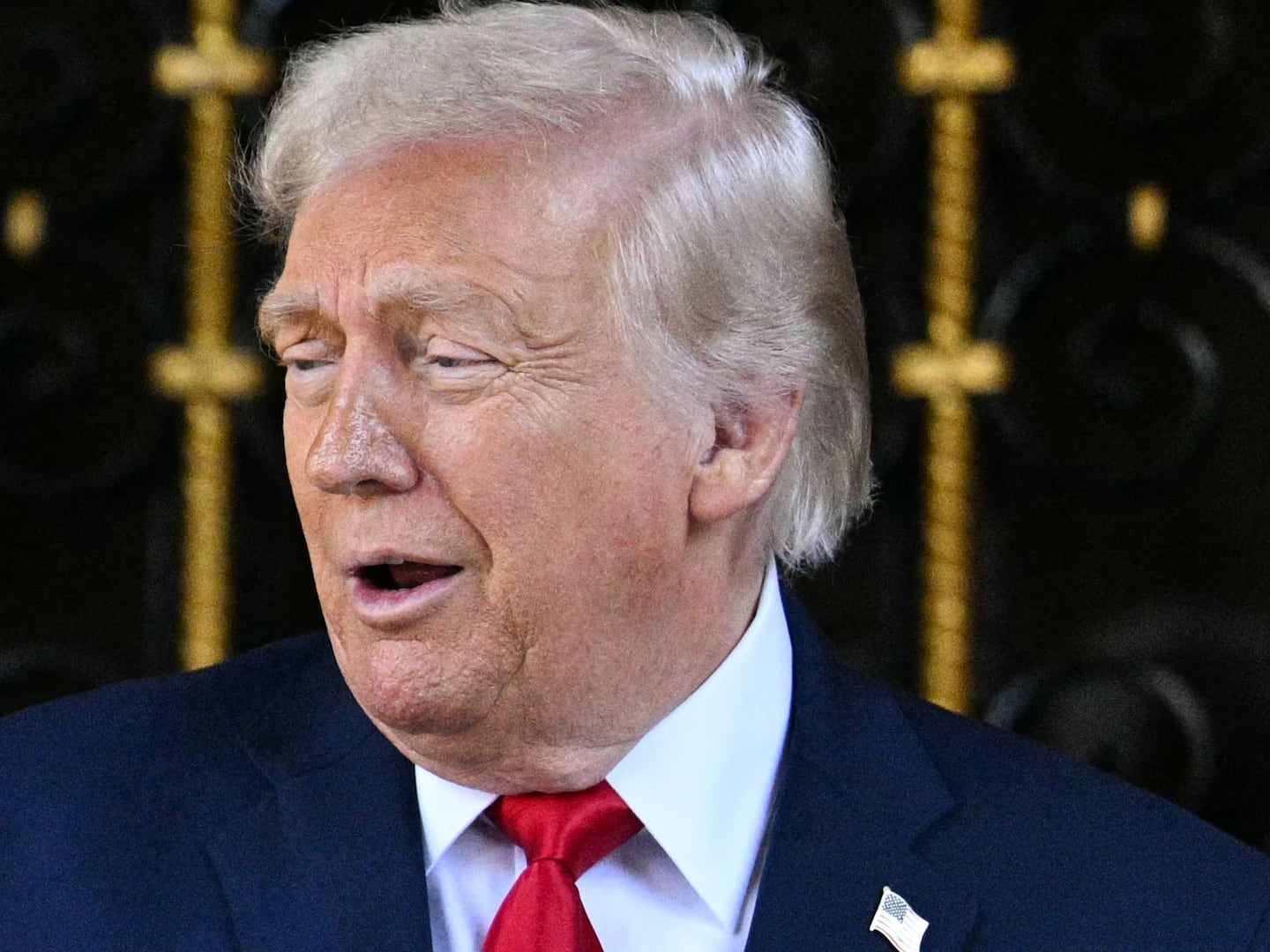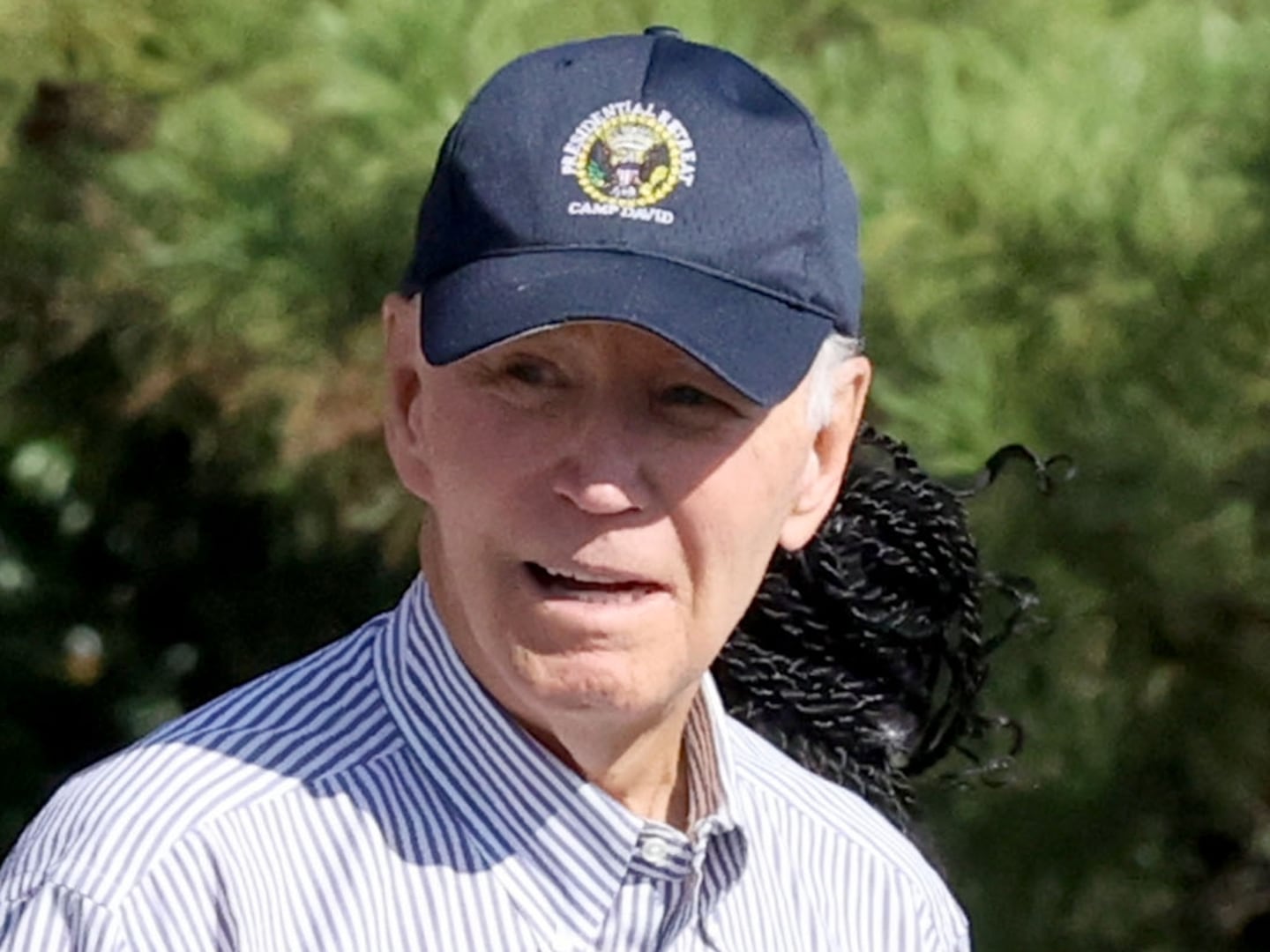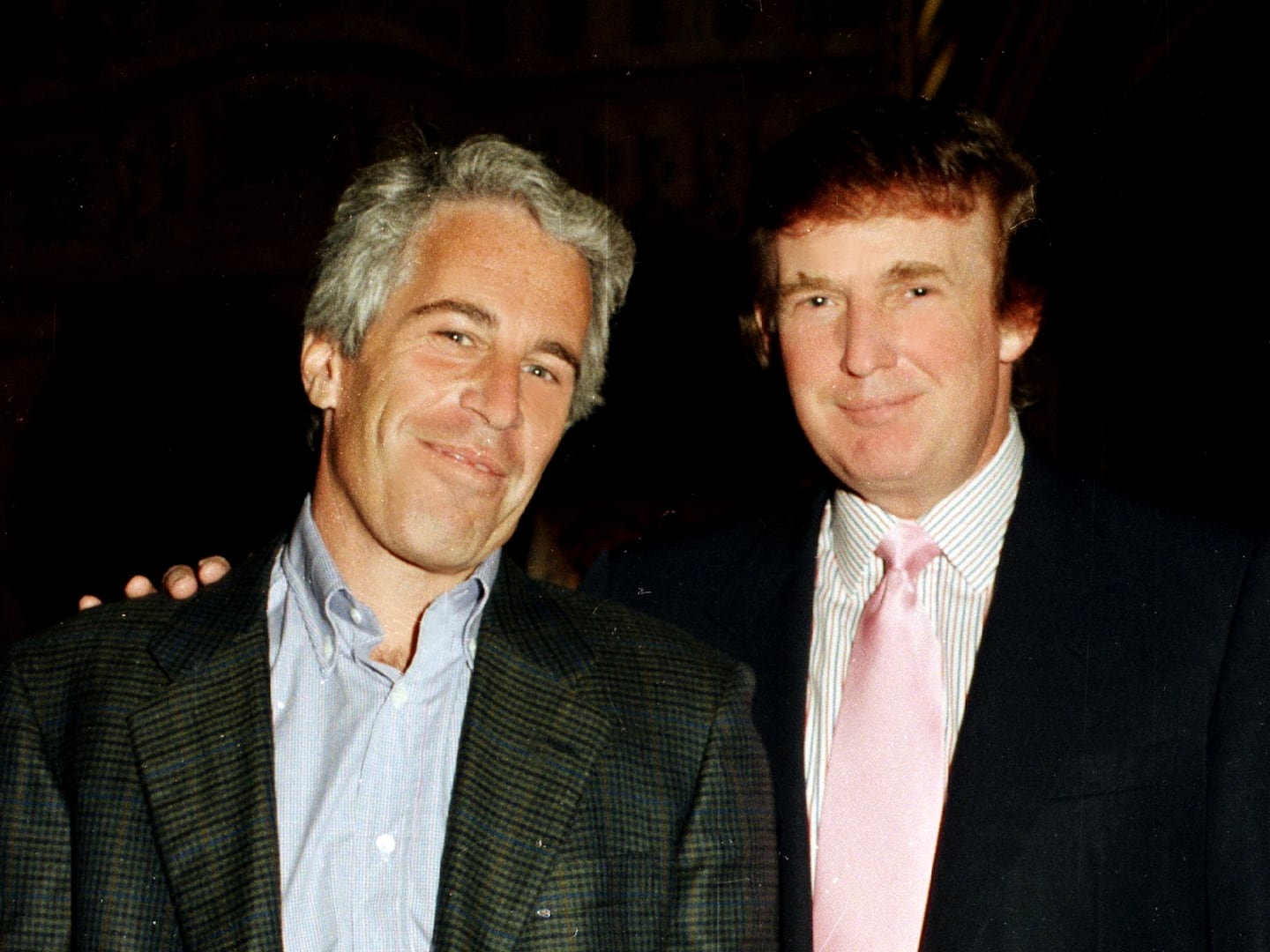Few events in the postwar era have cast such a long shadow over our national life as the assassination of President John F. Kennedy fifty years ago this month. The murder of a handsome and vigorous president shocked the nation to its core and shook the faith of many Americans in their institutions and way of life.
Those who were living at the time would never forget the moving scenes associated with President Kennedy’s death: the Zapruder film depicting the assassination in a frame-by-frame sequence; the courageous widow arriving with the coffin at Andrews Air Force Base still wearing her bloodstained dress; the throng of mourners lined up for blocks outside the Capitol to pay respects to the fallen president; the accused assassin gunned down two days later while in police custody and in full view of a national television audience; the little boy saluting the coffin of his slain father; the somber march to Arlington National Cemetery; the eternal flame affixed to the gravesite. These scenes were repeated endlessly on television at the time and then reproduced in popular magazines and, still later, in documentary films. They came to be viewed as defining events of the era.
In their grief, Americans were inclined to take to heart the various myths and legends that grew up around President Kennedy within days of the assassination. Though the assassin was a communist and an admirer of Fidel Castro, many insisted that President Kennedy was a martyr to the cause of civil rights who deserved a place of honor next to Abraham Lincoln as a champion of racial justice. Others held him up as a great statesman who labored for international peace.
But by far the most potent element of the Kennedy legacy was the one that associated JFK with the legend of King Arthur and Camelot. As with many of the myths and legends surrounding President Kennedy, this one was the creative contribution of Jacqueline Kennedy who imagined and artfully circulated it in those grief-filled days following her husband’s death.
On the weekend following the assassination and state funeral, Mrs. Kennedy invited the journalist Theodore White to the Kennedy compound in Hyannis for an exclusive interview to serve as the basis for an essay in a forthcoming issue of Life magazine dedicated to President Kennedy. White was a respected journalist and the author of the best selling chronicle of the 1960 campaign, The Making of the President, 1960, that portrayed candidate Kennedy in an especially favorable light and his opponent (Richard Nixon) in a decidedly negative light. White had also known Joseph Kennedy, Jr. (John F. Kennedy’s older brother) while a student at Harvard in the late 1930s. Mrs. Kennedy reached out to White in the reasonable belief that he was a journalist friendly to the Kennedy family.
In that interview Mrs. Kennedy pressed upon White the Camelot image that would prove so influential in shaping the public memory of JFK and his administration. President Kennedy, she told the journalist, was especially fond of the music from the popular Broadway musical, Camelot, the lyrics of which were the work of Alan Jay Lerner, JFK’s classmate at Harvard. The musical, which featured Richard Burton as Arthur, Julie Andrews as Guinevere, and Robert Goulet as Lancelot, had a successful run on Broadway from 1960 to 1963. According to Mrs. Kennedy, the couple enjoyed listening to a recording of the title song before going to bed at night. JFK was especially fond of the concluding couplet: “Don’t ever let it be forgot, that once there was a spot, for one brief shining moment that was Camelot.” President Kennedy, she said, was strongly attracted to the Camelot legend because he was an idealist who saw history as something made by heroes like King Arthur (a claim White knew to be untrue). “There will be great presidents again,” she told White, “but there will never be another Camelot.” In this way, and to her credit, Mrs. Kennedy sought to attach a morally uplifting message to one of the more ugly events in American history.
Following the interview, White retreated to a guest room in the Kennedy mansion to review his notes and compose a draft of the essay. His editors were at this hour (late on a Saturday evening) holding the presses open at great expense while waiting to receive his copy over the telephone. When White later phoned his editors to dictate his text (with Mrs. Kennedy standing nearby), he was surprised by their reaction for they initially rejected the Camelot references as sentimental and inappropriate to the occasion. Mrs. Kennedy, interpreting the gist of the exchange, signaled to White that Camelot must be kept in the text. The editors quickly relented. White later wrote that he regretted the role he played in transmitting the Camelot myth to the public.
These images were contained in White’s essay in the special issue of Life that hit the newsstands on December 3, 1963. Life at that time had a weekly circulation of seven million and a readership of more than 30 million. The extensive distribution of the issue guaranteed that the essay would receive the widest possible circulation here and abroad. Though the Arthurian motif has been ridiculed over the years as a distortion of the actual record, it has nevertheless etched the Kennedy years in the public memory as a magical era that will never be repeated.
Camelot, the Broadway musical (later a Hollywood movie), was adapted from T. H. White’s (no relation to the journalist) Arthurian novel, The Once and Future King, published in 1958 but made up of four parts that the author wrote separately beginning in 1938. White’s novel has proved to be one of the most popular and widely read books of our time. Reviewers called it “a literary miracle” and “a queer kind of masterpiece.” The reviewer for the New York Times called it “a glorious dream of the Middle Ages as they never were but as they ought to have been, an inspired and exhilarating mixture of farce, fantasy, psychological insight, medieval lore and satire all involved in a marvelously peculiar retelling of the Arthurian legend.” In contrast to traditional versions of the Arthurian legend, which celebrated knighthood and chivalry and portrayed Arthur as a brave warrior, White’s modern version poked fun at the pretensions of knights and princes and pointedly criticized war, militarism, and nationalism. White presented King Arthur less as a brave warrior and military leader than as a peacemaker who tried (but failed) to subdue the war-making passions of mankind.
Mrs. Kennedy very likely read The Once and Future King and perhaps saw or showed to her children the cartoon version of The Sword and the Stone (the first chapter of the four part novel) that Walt Disney produced in 1963. There were biting ironies in her attraction to a legendary kingship that unravels due to the consequences of betrayal and infidelity and to her association of the central myth of English nationality with the United States’ first Irish president. Nevertheless, she looked past these contradictions to focus on the central message of White’s novel that portrayed war as pointless and absurd. President Kennedy, as his widow wanted him to be remembered, was like King Arthur—a peacemaker who died in a campaign to pacify the warring factions of mankind.
One must admire Mrs. Kennedy for the skill with which she deployed these images in the difficult aftermath of her husband’s death. Our retrospective view of President Kennedy is now filtered through the legends and symbols she put forward at that time. The hardheaded politician devoted to step-by- step progress was transformed in death into the consummate liberal idealist. The Cold War leader who would “bear any price to insure the survival of liberty” was subsequently viewed as an idealistic peacemaker in the image of The Once and Future King. Difficult as it may be to accept, the posthumous image of JFK reflected more the idealistic beliefs of Mrs. Kennedy than the practical political liberalism of the man himself.
But the Camelot image as applied to the Kennedy presidency had some unfortunate and unforeseen consequences. By turning President Kennedy into a liberal idealist (which he was not) and a near legendary figure, Mrs. Kennedy inadvertently contributed to the unwinding of the tradition of American liberalism that her husband represented in life. The images she advanced had a double effect: first, to establish Kennedy as a transcendent political figure far superior to any contemporary rival; and, second, to highlight what the nation had lost when he was killed. The two elements were mirror images of one another. The Camelot myth magnified the sense of loss felt as a consequence of Kennedy’s death and the dashing of liberal hopes and possibilities. If one accepted the image (and many did, despite their better judgment), then the best of times were now in the past and could not be recovered. Life would go on but the future could never match the magical chapter that had been brought to an unnatural end. As Mrs. Kennedy said, “there will never be another Camelot.”
The Camelot myth posed a challenge to the liberal idea of history as a progressive enterprise, always moving forward despite setbacks here and there toward the elusive goal of perfecting the American experiment in self-government. Mrs. Kennedy’s image fostered nostalgia for the past in the belief that the Kennedy administration represented a peak of achievement that could not be duplicated. The legend of the Kennedy years as unique or magical was, in addition, divorced from real accomplishments as measured by important programs passed or difficult problems solved. The magical aspect of the New Frontier was located, by contrast, in its style and sophisticated attitude rather than in its concrete achievements. Mrs. Kennedy, without intending to do so and without understanding the consequences of her image making, put forward an interpretation of John F. Kennedy’s life and death that magnified the consequences of the assassination while leaving his successors with little upon which to build.
James Piereson is president of the William E. Simon Foundation and a senior fellow at The Manhattan Institute. He is the author of Camelot and the Cultural Revolution: How the Assassination of John F. Kennedy Shattered American Liberalism (2007)






